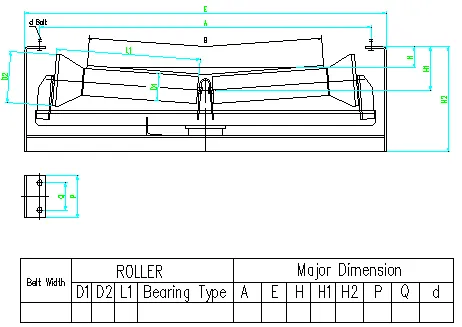 Afrikaans
Afrikaans  Albanian
Albanian  Amharic
Amharic  Arabic
Arabic  Armenian
Armenian  Azerbaijani
Azerbaijani  Basque
Basque  Belarusian
Belarusian  Bengali
Bengali  Bosnian
Bosnian  Bulgarian
Bulgarian  Catalan
Catalan  Cebuano
Cebuano  Corsican
Corsican  Croatian
Croatian  Czech
Czech  Danish
Danish  Dutch
Dutch  English
English  Esperanto
Esperanto  Estonian
Estonian  Finnish
Finnish  French
French  Frisian
Frisian  Galician
Galician  Georgian
Georgian  German
German  Greek
Greek  Gujarati
Gujarati  Haitian Creole
Haitian Creole  hausa
hausa  hawaiian
hawaiian  Hebrew
Hebrew  Hindi
Hindi  Miao
Miao  Hungarian
Hungarian  Icelandic
Icelandic  igbo
igbo  Indonesian
Indonesian  irish
irish  Italian
Italian  Japanese
Japanese  Javanese
Javanese  Kannada
Kannada  kazakh
kazakh  Khmer
Khmer  Rwandese
Rwandese  Korean
Korean  Kurdish
Kurdish  Kyrgyz
Kyrgyz  Lao
Lao  Latin
Latin  Latvian
Latvian  Lithuanian
Lithuanian  Luxembourgish
Luxembourgish  Macedonian
Macedonian  Malgashi
Malgashi  Malay
Malay  Malayalam
Malayalam  Maltese
Maltese  Maori
Maori  Marathi
Marathi  Mongolian
Mongolian  Myanmar
Myanmar  Nepali
Nepali  Norwegian
Norwegian  Norwegian
Norwegian  Occitan
Occitan  Pashto
Pashto  Persian
Persian  Polish
Polish  Portuguese
Portuguese  Punjabi
Punjabi  Romanian
Romanian  Russian
Russian  Samoan
Samoan  Scottish Gaelic
Scottish Gaelic  Serbian
Serbian  Sesotho
Sesotho  Shona
Shona  Sindhi
Sindhi  Sinhala
Sinhala  Slovak
Slovak  Slovenian
Slovenian  Somali
Somali  Spanish
Spanish  Sundanese
Sundanese  Swahili
Swahili  Swedish
Swedish  Tagalog
Tagalog  Tajik
Tajik  Tamil
Tamil  Tatar
Tatar  Telugu
Telugu  Thai
Thai  Turkish
Turkish  Turkmen
Turkmen  Ukrainian
Ukrainian  Urdu
Urdu  Uighur
Uighur  Uzbek
Uzbek  Vietnamese
Vietnamese  Welsh
Welsh  Bantu
Bantu  Yiddish
Yiddish  Yoruba
Yoruba  Zulu
Zulu v belt tensioner pulley
Understanding the V-Belt Tensioner Pulley Essential for Optimal Engine Performance
The V-belt tensioner pulley is a crucial component in the systems that drive various accessories in modern vehicles, including alternators, power steering pumps, and air conditioning compressors. It plays a pivotal role in maintaining the correct tension in the V-belt, ensuring that these components function efficiently and reliably.
Function and Importance
At its core, the V-belt tensioner pulley is designed to keep the V-belt tight, providing the necessary tension to prevent slippage. If the belt is too loose, it can slip off the pulleys, leading to a loss of power to the accessories it drives. Conversely, if the belt is too tight, it can cause excessive wear on both the belt and the accessories, leading to premature failure and costly repairs. Therefore, the tensioner pulley must maintain an optimal tension that balances these factors effectively.
Design and Operation
Typically, the V-belt tensioner pulley consists of a spring-loaded mechanism that automatically adjusts to changes in belt tension. Some modern vehicles utilize an automatic tensioning system that ensures the belt is at the proper tension throughout its lifespan. This automated adjustment is crucial because belts can stretch over time or due to temperature variations, and a tensioner allows for slight movements to maintain optimal tightness.
Common Issues
v belt tensioner pulley

Like any mechanical component, the V-belt tensioner pulley can develop problems over time. One of the most common issues is wear and tear from constant motion and the friction produced by continuous operation. Symptoms of a failing tensioner include unusual noises such as squeaking or grinding, visible wear on the pulley or belt, and a decrease in the performance of driven accessories.
When a tensioner pulley fails, it may not be immediately obvious to the driver. However, ignoring the signs can lead to more severe issues, including belt breakage or malfunction of the driven components. Regular maintenance checks are essential to catch these problems early, ensuring that the tensioner is functioning correctly.
Maintenance and Replacement
Maintaining the V-belt tensioner pulley is relatively straightforward. Regular inspections of the belts and pulleys for signs of wear, cracks, or misalignment can help prevent catastrophic failures. Most manufacturers recommend replacing the V-belt and tensioner together during scheduled maintenance intervals, usually every 60,000 to 100,000 miles, or when any wear is detected.
When replacing a V-belt tensioner pulley, it’s crucial to use high-quality OEM or reputable aftermarket parts. This ensures compatibility and longevity, providing peace of mind for the vehicle owner. Additionally, proper installation is vital; following manufacturer guidelines will help in achieving the best results and will protect the engine’s accessory systems effectively.
Conclusion
In summary, the V-belt tensioner pulley is a small yet vital component of a vehicle's engine system. Understanding its role in maintaining belt tension is crucial for ensuring the longevity and performance of engine accessories. Regular maintenance and timely replacement can prevent more significant issues, keeping your vehicle running smoothly and efficiently for years to come.
-
Revolutionizing Conveyor Reliability with Advanced Rubber Lagging PulleysNewsJul.22,2025
-
Powering Precision and Durability with Expert Manufacturers of Conveyor ComponentsNewsJul.22,2025
-
Optimizing Conveyor Systems with Advanced Conveyor AccessoriesNewsJul.22,2025
-
Maximize Conveyor Efficiency with Quality Conveyor Idler PulleysNewsJul.22,2025
-
Future-Proof Your Conveyor System with High-Performance Polyurethane RollerNewsJul.22,2025
-
Driving Efficiency Forward with Quality Idlers and RollersNewsJul.22,2025





























